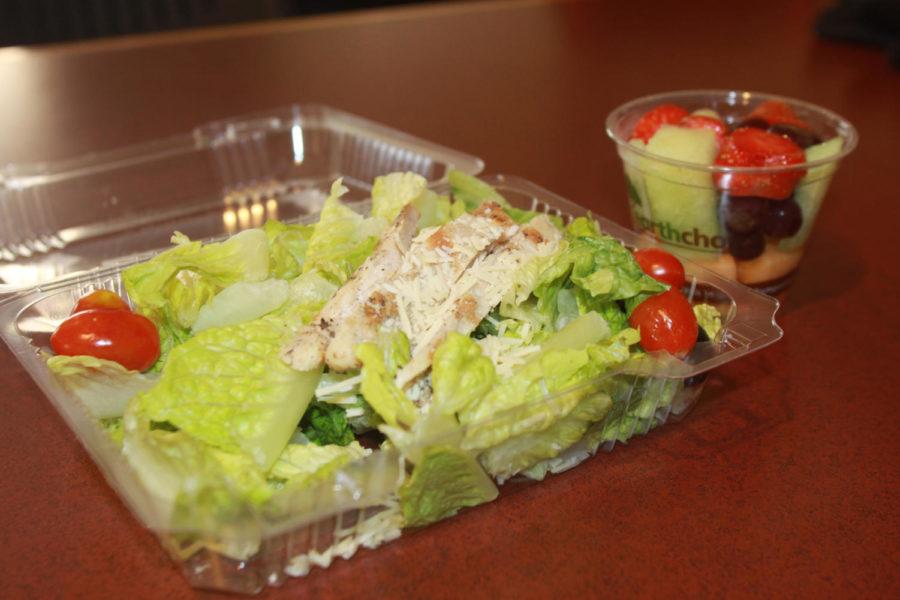Healthy eating now will help future health
Photo: Ashlee Clark/Iowa State Daily
Eating fresh greens and fruit as part of your daily diet will help to keep a healthy heart.
January 19, 2011
Coronary heart disease is the leading cause of death in the United States. There are more than 1,255,000 heart attacks per year in the U.S., meaning a person somewhere in the U.S. has a heart attack every 25 seconds. Of those who have heart attacks, 425,425 die, according to the American Heart Association.
However, heart disease can be prevented. In fact, simply changing one’s diet can drastically decrease one’s risk of developing heart disease.
“I would say that the most important thing [in keeping one’s heart healthy] is a well-rounded diet that is rich in fruits and vegetables and whole grains and fiber,” said Sally Barclay, registered dietician at the Nutrition Clinic for Employee Wellness at Iowa State.
Barclay has been at Iowa State for eight years. She has counseled many ISU employees and has helped them modify their diets in order to live healthier.
“A lot of people will come in, and they’ll say, ‘Oh, I’ve just been to the doctor and found out that my cholesterol is high, and he wants to put me on a statin,’ and I said, ‘No, just give me six months to change my lifestyle and see if I can stay off the medicine,”” Barclay said. “We see a lot of that kind of thing.”
One of the most important aspects of a healthy diet, Barclay said, is eating enough fruits and vegetables. A person who eats 2,000 calories a day should eat at least four-to-five servings of both fruits and vegetables per day, according to the American Heart Association.
“First, find out what [fruits and vegetables] you enjoy, and then make sure that you are buying them on a day-to-day basis,” Barclay said. “If you are packing a lunch, then definitely include them in that.”
Barclay also recommends dividing one’s plate in order to control portion size.
“A quarter of your plate would be lean protein, a quarter of your plate would be a complex carbohydrate, like pasta or brown rice, then the other half of your plate should be vegetables or fruits,” Barclay said.
Although Barclay recommends cooking one’s own meals, she does offer some tips if one chooses to go out to eat.
“Learn what is the appropriate portion, which, for meat, we usually say at any given meal, is a deck of cards or the palm of your hand,” Barclay said. “If they are serving more than that, then that should be packed up and eaten at a different meal.”
Fish is also something everyone should include in their diet, Barclay said. She recommends eating fish at least twice a week.
“You meet a lot of people in landlocked Iowa that are not comfortable or familiar with fish, but canned fish is OK, whether it’s tuna fish or salmon,” Barclay said.
She also advises people to prepare their food with healthy fats, such as olive oil or canola oil.
“Canola and olive oil have a really good makeup that helps with heart disease,” Barclay said.
When looking at nutrition labels, the amount of sodium in a product should be looked at. She said almost 75 percent of our sodium intake comes from processed food.
“It’s tricky though because we don’t have time to make everything from scratch,” Barclay said. “Processed food is convenient, but it has high sodium levels, so hopefully the food manufacturers are going to try to reduce the sodium levels in their food because saltiness is an acquired taste, so you can kind of wean yourself off of it.”
All of these healthy practices should start early in life, Barclay said. She described how unhealthy choices one makes now will affect one’s health in the future.
“The building up of the plaque in the arteries that causes the heart disease is a long-term process,” Barclay said. “You need to start early with [eating healthy] because that will help you in the future.”







